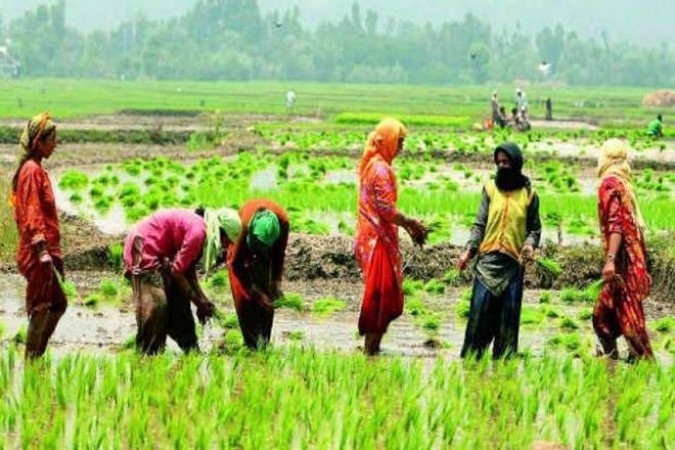
New Delhi: In a surprising development, Kharif sowing in India has witnessed a significant 9% decline, even as monsoon rains have picked up across most parts of the country. This decline in agricultural activity has raised concerns about the potential impact on the country's food security and rural economy.
The Kharif season, also known as the summer or monsoon crop season, is a crucial period for farmers in India. It typically begins with the onset of the monsoon in June and extends till September. Crops such as rice, maize, cotton, pulses, and oilseeds are predominantly cultivated during this season.
Also read:eFishery Startup to close the Valuation at a whopping figure of %200 Million
According to recent reports from the Ministry of Agriculture, Kharif sowing for the current season has seen a 9% decline compared to the same period last year. This decline has come as a surprise to many, given the improved monsoon rainfall witnessed in most parts of the country.
While the monsoon rains have been relatively better this year, there have been localized variations in rainfall distribution. Some regions have experienced excessive rainfall, leading to flooding and waterlogging, while others have faced deficit rainfall, causing drought-like conditions. These anomalies in rainfall distribution may have contributed to the decline in Kharif sowing.
Additionally, several factors such as input costs, availability of credit, and labor shortages have also played a role in the reduced sowing activity. Farmers have faced challenges in accessing affordable credit, which has hindered their ability to invest in seeds, fertilizers, and machinery required for cultivation. The rising input costs have further added to the financial burden on farmers, discouraging them from undertaking extensive sowing activities.
Also read:Benchmark Space Systems to set a benchmark of Funding of $33 Million
Experts believe that the declining trend in Kharif sowing could have far-reaching consequences for India's food security and agricultural economy. The reduced sowing may lead to lower crop yields, impacting the availability and affordability of essential commodities in the market. This, in turn, could affect inflation rates and put additional pressure on already strained household budgets.
The government has taken note of the situation and is implementing measures to mitigate the challenges faced by farmers. Steps are being taken to improve access to credit, provide timely and adequate inputs, and enhance irrigation facilities in rain-deficient regions. Additionally, crop insurance schemes and subsidies are being reinforced to safeguard farmers' interests and encourage them to undertake cultivation activities.
Efforts are also being made to promote sustainable farming practices, such as water conservation, crop diversification, and organic farming, to improve productivity and resilience in the agricultural sector. These initiatives aim to ensure the long-term viability of agriculture and safeguard farmers against the uncertainties posed by climate change and fluctuating market conditions.
Also read:Tomato Crisis: Prices Skyrocket by 445%, Surpassing Gasoline Costs in India
As the Kharif season progresses, farmers and policymakers are closely monitoring the situation and taking necessary steps to address the challenges faced. The focus remains on supporting farmers, enhancing productivity, and ensuring food security for the nation.
While the decline in Kharif sowing is a cause for concern, it is important to acknowledge that agriculture is a complex and dynamic sector. It is influenced by a multitude of factors, ranging from weather patterns to market dynamics and government policies. A holistic approach involving coordinated efforts from all stakeholders is crucial to address the challenges faced by farmers and sustaining agricultural growth in the country.
As the monsoon progresses and the agricultural landscape evolves, the coming months will be critical in determining the overall impact on crop production and the subsequent implications for the Indian economy. Close monitoring, timely interventions, and collaborative efforts are essential to navigate these challenges and ensure the well-being of farmers and the country's agricultural sector.